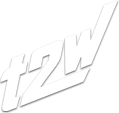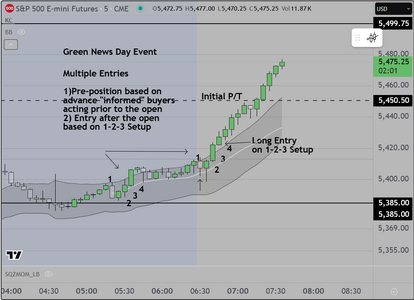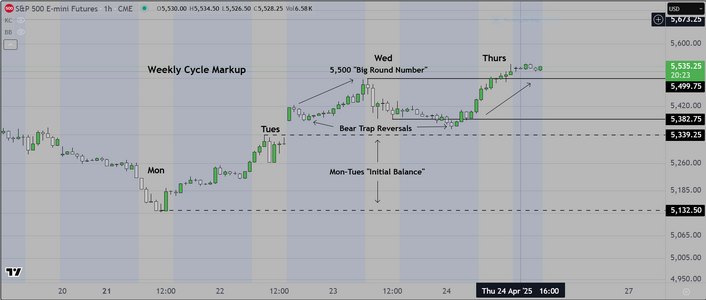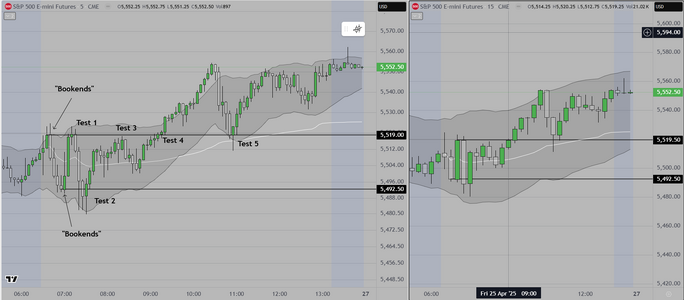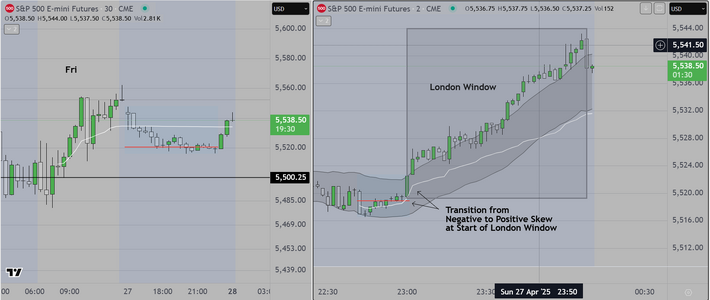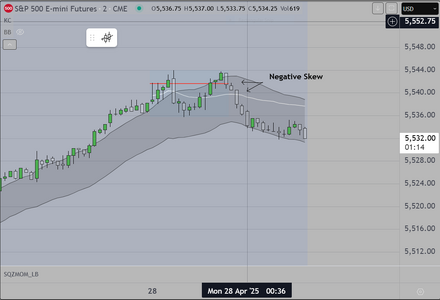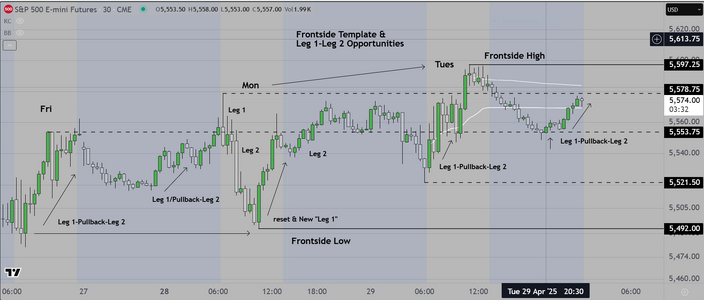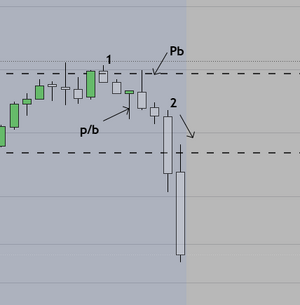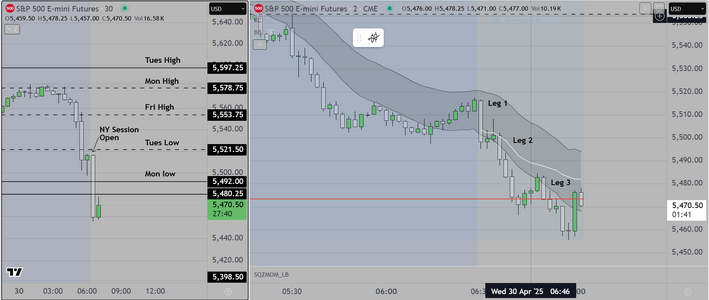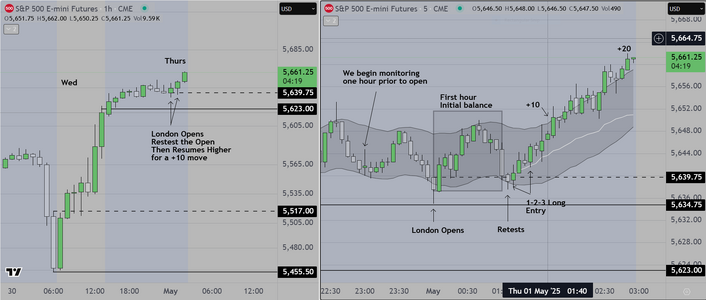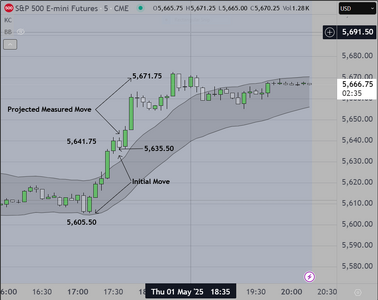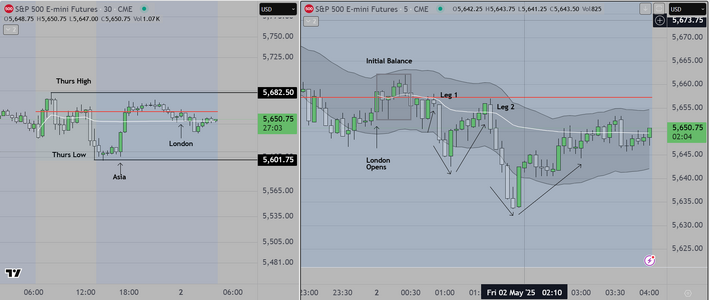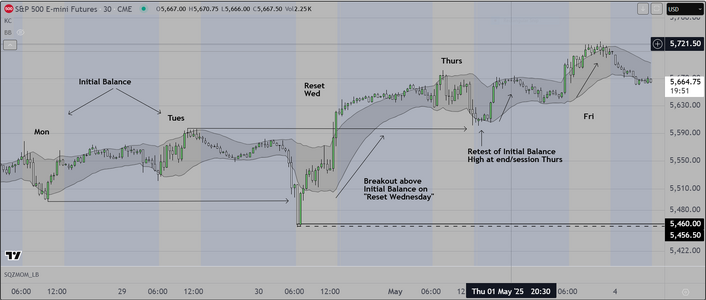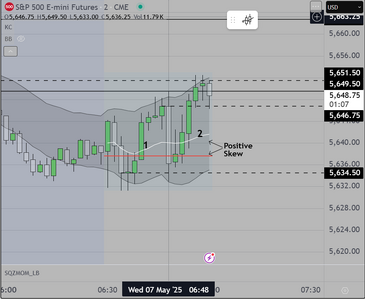Today was a "Green News" day, meaning that we had
several "high impact" economic news events happening
and (in our opinion), "other" time frame participants had
advance knowledge of the outcome and had pre-positioned
themselves in the market, to take advantage of the move up
We teach this. It's straightforward, and only requires that students
pay attention to the obvious human behavior. We show traders
how to find the "tells" which are based on price action and volume
(or momentum). Then they learn to create scenarios based on
what we call "confidence levels".
In this case, the scenario provides two options. The trader can if they
wish, pre-position along with the institutions, then if the trade is working
they take partial profit early (called "buying a stop") and they hold a
"runner". This requires that they trade at least two (2) contracts. OR
They can simply wait for the formal open and take the 1-2-3 setup with
long entry on "4".
The attached markup shows the entries. We did not take the early entry
(we were sleeping) but it is often the case that when we do the preparation
for this day, we get up early to participate in what we were taught to call
a "Green News Day Event". Obviously an overhead profit target was hit.
Postscript
We had to clean up our chart, to better show the opportunities
We have said this previously, "nothing works all the time" however
this type of logic based trading does work quite well if one commits
to and maintains the discipline. The results certainly speak for themselves.
Good luck
several "high impact" economic news events happening
and (in our opinion), "other" time frame participants had
advance knowledge of the outcome and had pre-positioned
themselves in the market, to take advantage of the move up
We teach this. It's straightforward, and only requires that students
pay attention to the obvious human behavior. We show traders
how to find the "tells" which are based on price action and volume
(or momentum). Then they learn to create scenarios based on
what we call "confidence levels".
In this case, the scenario provides two options. The trader can if they
wish, pre-position along with the institutions, then if the trade is working
they take partial profit early (called "buying a stop") and they hold a
"runner". This requires that they trade at least two (2) contracts. OR
They can simply wait for the formal open and take the 1-2-3 setup with
long entry on "4".
The attached markup shows the entries. We did not take the early entry
(we were sleeping) but it is often the case that when we do the preparation
for this day, we get up early to participate in what we were taught to call
a "Green News Day Event". Obviously an overhead profit target was hit.
Postscript
We had to clean up our chart, to better show the opportunities
We have said this previously, "nothing works all the time" however
this type of logic based trading does work quite well if one commits
to and maintains the discipline. The results certainly speak for themselves.
Good luck
Attachments
Last edited:
